Exploring Unique Pave Techniques in Jewelry Design
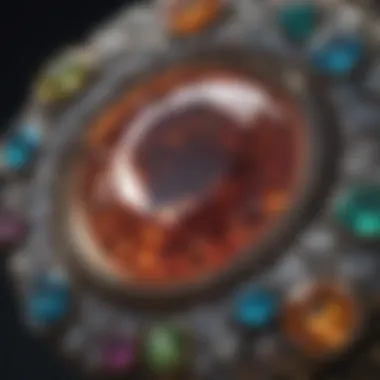
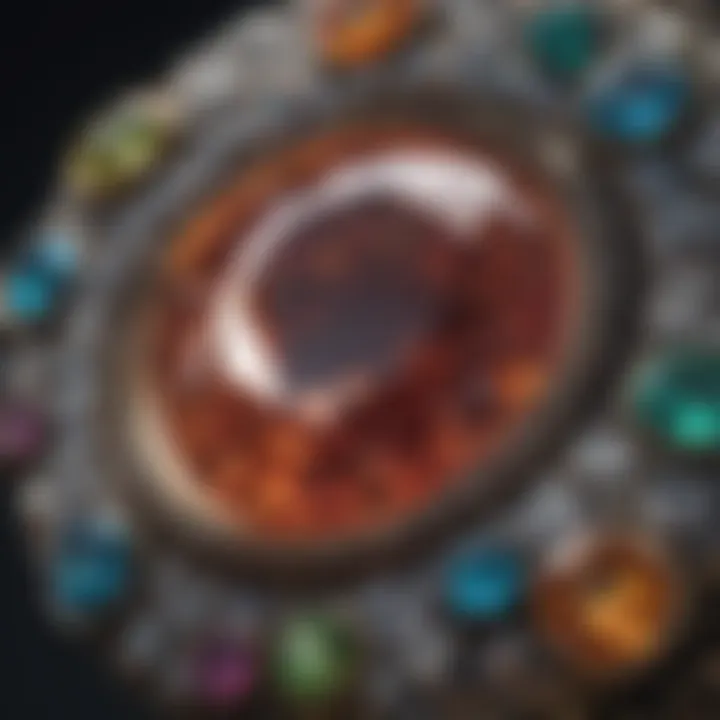
Intro
The world of jewelry is profoundly intricate, a tapestry woven from craftsmanship and the alluring allure of gemstones. At the heart of this art form lies pave techniques, a unique method that brings together the finest materials and skilled artistry. This section will delve into the different types of pave, shedding light on why they matter not just in aesthetics, but also in the historical fabric of jewelry making.
Gemstone Overview
Definition of Gemstones
A gemstone can be defined as a precious or semi-precious stone that is cut and polished to be used in jewelry. These gemstones have fascinated humanity for centuries, symbolizing wealth, beauty, and sometimes, even power. The sheer variety spans from diamonds to sapphires, each with its own unique properties and stories.
Classification of Gemstones
Gemstones are classified based on several criteria:
- Composition: This refers to the minerals or organic materials that make up the stone. For instance, diamonds are carbon-based, while pearl comes from mollusks.
- Hardness: Measured on the Mohs scale, it helps in determining how resistant a stone is to scratches. Diamonds score a perfect ten, making them the hardest of all.
- Color: Color significantly impacts the value of gems. The deeper and more vibrant the hue, the more desirable the stone tends to be.
Different classifications lead to varying pave techniques, as the hardness and properties of the gemstone dictate the methods used in jewelry design.
Historical Significance
Origins of Gemstone Use
The use of gemstones dates back thousands of years, with ancient civilizations utilizing them not only for adornment but also for spiritual and medicinal purposes. Historical texts indicate that in ancient Egypt, lapis lazuli was adored for its deep blue hue and was often associated with royalty. The Egyptians believed these stones held magical powers, contributing to their prevalence in amulets and burial items.
Cultural Insights: Gemstones in Ancient Civilizations
Throughout history, various cultures have had distinct relationships with gemstones. For example, in India, precious stones like rubies and emeralds are steeped in folklore, often linked to valor and wisdom. On the other hand, the Chinese culture has a profound appreciation for jade, seeing it as a symbol of purity and moral integrity.
"Gemstones have not only adorned the bodies of nobility but have also served as symbols of protection, power, and prestige across cultures."
As we move on to explore the specific types of pave techniques, understanding the significance of gemstones in history provides a richer context for their usage in modern jewelry design.
Understanding Pave Setting
Pave setting stands as a hallmark in the realm of jewelry design, reflecting an exquisite mastery over how smaller gemstones can be arranged to create breathtaking visual effects. Understanding pave setting is essential not only for gem enthusiasts and collectors but also for aspiring jewelry designers wishing to explore sophisticated techniques that amplify brilliance. Precise placement of these stones brings an awe-inspiring shine that can elevate any piece from ordinary to extraordinary.
It enables a kind of interplay between light and stone that captures the eyes and elevates the overall aesthetic. A seasoned jeweler's proficiency in pave techniques accentuates their designs and makes a statement about craftsmanship, artistry, and timeless elegance.
Definition of Pave Setting
Pave setting refers to a method of fastening gemstones—often small and uniformly shaped—on the surface of a metal jewelry piece, creating the illusion that the stones are laid closely together, similar to cobblestones on a street. The word "pave" itself originates from the French term meaning "to pave". This technique not only enhances the gemstone's visual appeal but also provides a modern touch to jewelry.
The setting usually consists of tiny beads or prongs that are used to hold these stones in place without revealing too much of the metal beneath. By employing pave setting, jewelers create designs that are intricate yet harmonious.
Historical Background
Origin of Pave Techniques
The roots of pave setting can be traced back to 16th-century Europe, where it first began appearing in jewelry design. Its origin lies particularly within French craftsmanship, where the technique was perfected. Artisans from this period sought ways to maximize the sparkle of diamonds and colored stones, and pave emerged as a favored choice.
One key characteristic of pave techniques from the outset was the emphasis on creating an uninterrupted surface of brilliance without visible metal gaps. This aesthetic feature not only captivated the eye but also defined the craftsmanship of the period, making it a beloved choice for intricate jewelry, especially in royal collections.
Evolution Through Periods
As time marched forward, the elegance of pave settings adapted within various jewelry styles. The Baroque and Rococo periods saw a surge in elaborate designs, enhancing pave's opulence. Each period brought its unique twist, incorporating different shapes and sizes of stones, thereby enriching the overall appeal.
Critically, the evolution of pave techniques has led to the development of styles such as micro pave, where even smaller gemstones are utilized for intricate designs that boast both detail and shimmer. It is this unique feature, the transition from large to minute stones, that has made pave a versatile technique embraced by contemporary designers.
Importance in Jewelry Design
Understanding pave setting is pivotal for several reasons. Primarily, it allows designers to craft intricate patterns and captivating designs that play with light and shadow. Moreover, it offers versatility—working effectively with both diamonds and colored gemstones—thus broadening a designer's design palette.
With pave settings, the distinction between the stones and the metal can be blurred, fostering a seamless flow of design. This integration is particularly notable in engagement rings and statement pieces, where the aim is often to emphasize the radiance of the gemstones. Overall, pave setting is not just a technique; it's a narrative of artistry that stitches together history, culture, and technical expertise.
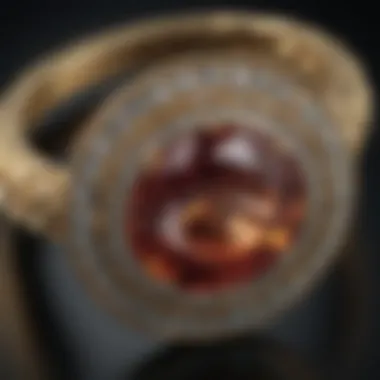
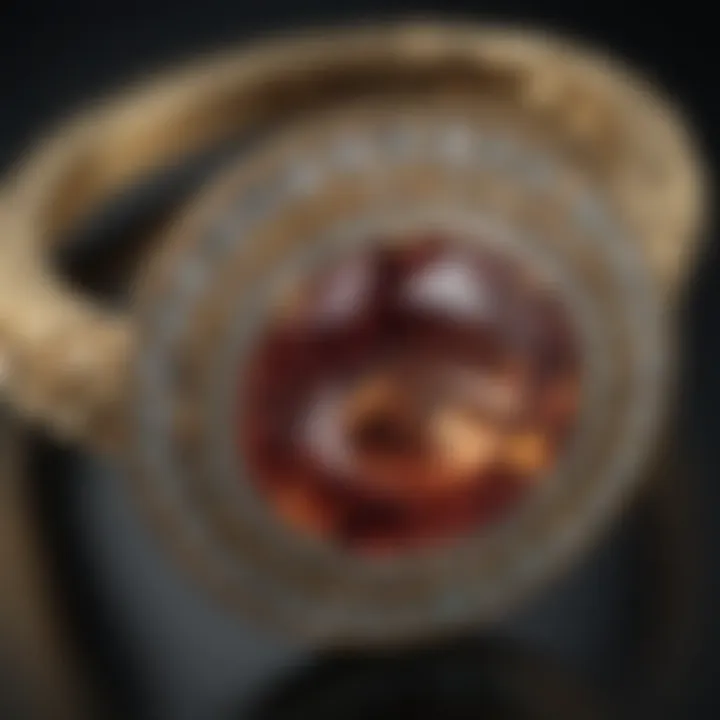
Types of Pave Techniques
The intricacies of pave techniques are crucial to the realm of jewelry design. Each technique serves a unique purpose and offers distinct aesthetic and structural advantages. Choosing the suitable type of pave can elevate the overall appeal of a piece while ensuring the gemstones are showcased in just the right way. In this section, we delve into the most common pave styles, providing insight into their special characteristics, applications, and the considerations that come with them.
Classic Pave
Characteristics
Classic pave is perhaps the most recognized form of pave setting. Its hallmark is the seamless arrangement of small gemstones, typically diamonds, which are set closely together, creating an uninterrupted expanse of sparkle. One key characteristic of classic pave is the way these stones are embedded in a shared metal setting, which minimizes visibility of the prongs. This not only maximizes the light that reaches each stone but also enhances the visual impact of the overall design.
Why choose classic pave? Its popularity lies in its ability to conceal metal work, allowing the brilliance of the gemstones to take the spotlight. However, while beautiful, classic pave can be more susceptible to damage, hence requiring a jeweler’s skill to ensure durability.
Applications in Modern Jewelry
Modern jewelry continues to find innovative ways to incorporate classic pave. You often see it in engagement rings, where the shank of the ring is adorned with this setting, creating a dazzling halo effect around the center stone. This technique effectively draws the eye and creates a sense of richness.
Why is it a common choice? Classic pave not only adds flair to traditional designs but also complements contemporary pieces, making it a versatile option suitable for a variety of occasions. Still, when considering it, be prepared for the maintenance work it entails, for the close-setting can attract dirt and grime more easily.
Micro Pave
Detailing and Precision
Micro pave takes the concept of classic pave to the next level. In this refined technique, minuscule gemstones are meticulously set into the jewelry. This precision creates a more intricate and detailed look, allowing for complex patterns or designs that can transform a simple piece into a statement.
The hallmark of micro pave is its attention to detail, providing an unmistakable look that can stand out even in a crowded marketplace. For many, this added precision makes micro pave a favored choice in high-end jewelry design, paving the way for intricate artistry.
Best Stones for Micro Pave
When it comes to micro pave, not all stones are created equal. Diamonds reign supreme due to their unmatched brilliance and clarity, but colored stones can also be employed to add unique flair. Gemstones need to be small, typically ranging from 1mm to 2mm, in order to fit snugly within their settings.
What makes them suitable? Their size and quality are crucial; high-quality stones can elevate the overall aesthetic and help to ensure a clean, polished appearance. However, note that their diminutive size can make them more challenging to work with, demanding skilled craftsmanship.
Bezel Pave
Overview of Technique
Bezel pave differs significantly from its cousins. Instead of prongs holding each stone, a metal rim encircles each gem. This technique offers a visually striking look while providing more security for the stones. The result is a contemporary style that feels both luxurious and robust.
The primary advantage of bezel pave is its protective nature. This can be especially beneficial for individuals who lead active lifestyles, as the stones are less likely to become dislodged.
Integration with Other Designs
Bezel pave excels in blending with other design elements. It can easily complement both traditional and modern styles, functioning beautifully in rings, earrings, and pendants. This versatility stems from the clean lines and elegant curves created by the bezels, allowing it to be integrated seamlessly with different metals and textures.
One downside to consider is that bezel settings can sometimes limit the light that shines through the gemstones, potentially dulling their sparkle. Still, for many jewelry designers, the trade-off for durability and a modern finish is well worth it.
Channel Pave
Advantages of Channel Setting
Channel pave offers a distinct edge; rather than being set individually, gemstones are placed within a channel or groove in the metal. This not only protects the stones but also creates a smooth surface that is visually appealing. One of the greatest advantages is the durability it provides, shielding the gems from scratches and damage.
Many opt for this method in both wedding bands and statement rings, where the risk of wear and tear is higher. The clean lines of channel pave give a contemporary feel, making it an excellent choice for anyone looking for something sleek.
Common Misconceptions
Despite its strong reputation, there are misconceptions connected to channel pave. A common belief is that because stones are set in a channel, they are less susceptible to falling out. While this technique does offer protection, stones can still become loose if not properly installed. Overall, regardless of the technique chosen, it's essential to work with a skilled jeweler who understands the nuances of each pave type.
Invisible Pave
Technical Challenges
Invisible pave, perhaps the most challenging of the group, is admired for its illusion of a seamless gemstone surface. In this technique, each stone is set in such a way that no prongs are visible, leading to a smooth, uninterrupted sparkle. The precision required for this setting is significant, with jewelers needing to make exact calculations to ensure each stone aligns perfectly.
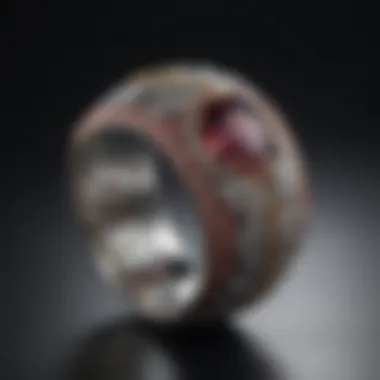
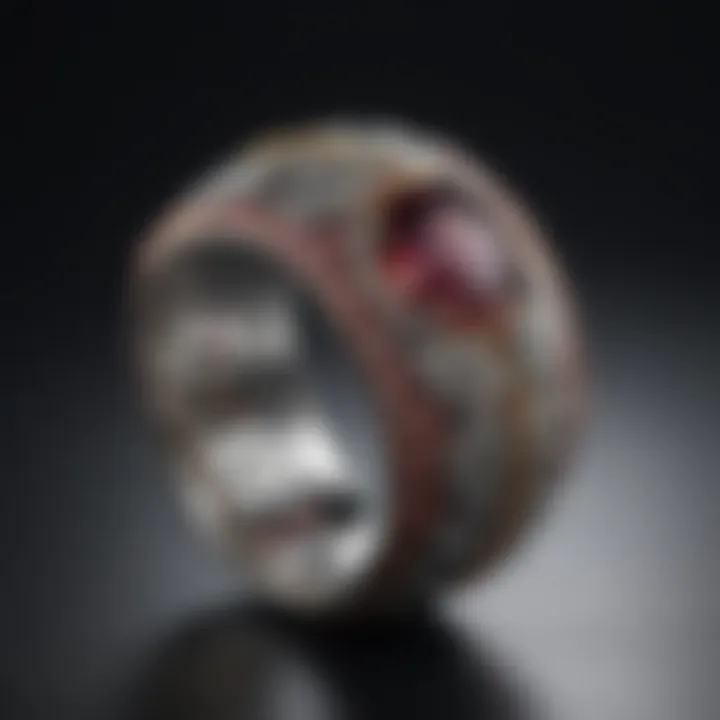
Though beautiful, the expert craftsmanship required often makes it one of the more expensive pave techniques.
Stones Best Suited
Choosing the right stones for invisible pave is crucial. Diamonds, given their clarity and brilliance, are often favored for this technique. However, high-quality colored gemstones can also work, adding a unique twist to traditional designs.
In summary, while the allure of invisible pave is undeniable, the necessity for premium cuts and high-quality settings can be a barrier for some, ultimately making it an exclusive choice for the discerning jewelry lover.
Materials Used in Pave Setting
When delving into the intricacies of pave setting, the materials utilized hold utmost importance. They are not mere choices; they’re the vital underpinnings that breathe life into the design, defining its allure and longevity. The right combination can lead to stunning creations, while poor selections could compromise the integrity of the finished piece. Hence, understanding the interplay between materials and design is key for anyone keen on either crafting or wearing exquisite pave jewelry.
Types of Gemstones
Diamonds
Diamonds sit at the pinnacle when it comes to pave setting choices. Among their defining traits is the remarkable brilliance they unleash, a quality that captures light in a way that few other stones can. Their clarity and refractive properties make them particularly popular for this technique. Not only do they create stunning visual depth, but their durability ensures that they withstand everyday wear, making them suitable for a range of jewelry, from engagement rings to intricate necklaces.
What stands out about diamonds is their ability to play well with virtually any design. They can serve as the main attraction or as supporting characters, complementing colored stones or intricate metals. However, one must be cautious; not all diamonds are equal. The quality of cut significantly influences how effectively they reflect light. A well-cut diamond can outshine a poorly cut one, despite similar carat weights, thus impacting its overall contribution to the jewelry piece.
Colored Gemstones
Moving away from traditional diamonds, colored gemstones offer a vibrant alternative that opens the door to creativity in pave designs. Rubies, sapphires, and emeralds each bring a distinct splash of color, allowing designs to reflect the wearer’s personality. Their availability in an array of shades means that jewelers can meticulously choose colours to tell a story, setting them apart from the more monolithic diamond setting.
These gemstones have their own sets of characteristics. For instance, while sapphires are cherished for their hardness and resistance to scratches, other stones, like opals, bring unique visual effects that can be both captivating and tricky to maintain. Color can sometimes compete with shine, but the blend of both can elevate a piece to a new artistic level. When thinking about longevity, it's necessary to consider that certain colored stones may require more diligent upkeep compared to diamonds.
Synthetic Options
The rise of synthetic options has transformed the landscape of jewelry making, including pave settings. Synthetic gemstones, such as lab-created diamonds or moissanite, can be designed to mimic their natural counterparts. Their production is often more environmentally friendly and offers a lower cost compared to mined gems, making them highly appealing for budget-conscious consumers.
Furthermore, synthetic stones often boast impressive clarity and uniformity, providing consistent brilliance across pieces. While some purists may argue against using synthetic options, they can provide a pragmatic alternative for those who seek sustainable choices. The key feature lies in theirmarketability; they can often be marketed to a younger generation seeking unique yet affordable jewelry without compromising on style.
Metal Choices
Gold and Silver
Gold and silver are the bedrocks of metal choices for pave settings. Gold is preferred not only for its timeless allure but also for its malleability, making it ideal for setting small gems securely. Yellow, white, and rose gold all provide different aesthetics that can complement the stones beautifully. Silver, on the other hand, is more affordable, appealing particularly to those new to jewelry.
However, silver has its quirks—tarnishing can occur without proper care. Gold, while more durable, can be heavier and pricier but is often viewed as a sign of quality in jewelry. Therefore, when making a selection, both aesthetics and practical considerations should be weighed.
Platinum in Pave
Platinum deserves notable mention due to its robustness and hypoallergenic properties. This metal stands out because of its lustrous sheen and resistance to tarnish, making it an excellent choice for fine jewelry that undergoes rigorous daily use. It also has a higher density than other metals. This characteristic not only adds to its weight but enhances the feeling of substantiality in a piece, a detail often appreciated by serious collectors.
Using platinum, however, can lead to increased costs, making it less accessible for the average buyer. Ultimately, the choice of platinum in pave setting can signal exclusivity and high-end design, appealing to those with a taste for the finer things in life.
Importance of Quality and Cut
The quality of materials used in pave jewelry cannot be overlooked. The cut of each gemstone and the craftsmanship surrounding the metals will directly influence that sparkle and overall appeal of the final piece. Unique cuts and high-quality materials can elevate the beauty and desirability of the jewelry. Therefore, in any jewelry design, one should prioritize quality and careful selection to ensure that the end product not only dazzles but also stands the test of time.
Advantages of Pave Setting
Pave setting is a celebrated technique in the realm of jewelry design, offering a plethora of advantages that enhance not just the aesthetic appeal but also the functionality of pieces. Its distinctive charm lies in the way it showcases gemstones, making them appear as a continuous surface of brilliance. This section will delve into the core benefits of pave setting, illuminating its position in the landscape of gemstone jewelry.
Aesthetic Appeal
One cannot overlook the sheer visual impact of pave settings. When properly crafted, this technique creates a seamless sparkle that catches the eye from every angle. The tiniest of gems are meticulously arranged close together, akin to a carefully laid cobblestone path. This results in a blanket of dazzling light that transforms even a simple band into a piece of art. Clients often feel a rush of excitement at the sight of pave jewelry, drawn in by the luminous surface that seems to shine from within.
Moreover, pave settings are not just limited to one design aesthetic. They can blend perfectly with various styles—be it vintage, modern, or eclectic. If you think of a delicate cluster of diamonds on a wedding band or a hint of vibrant sapphires adorning a pendant, the adaptability and charm of pave can't be stressed enough. The way light reflects off from the settings creates a visual symphony that is hard to replicate in other jewelry styles.
Enhanced Gemstone Brilliance
A pivotal advantage of pave setting lies in its ability to maximize the brilliance of gemstones. The technique allows each small stone to catch the light independently while still contributing to the overall appearance. When placed in a traditional setting, larger stones often overshadow smaller ones, but pave settings level the playing field. Each gemstone shines in its own right, enhancing the sparkle of the ensemble.
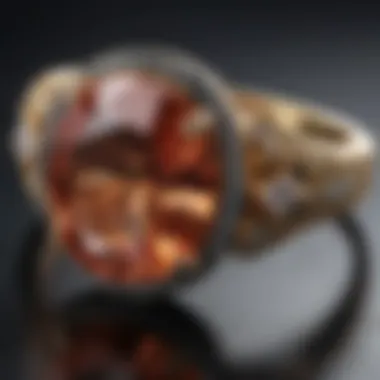
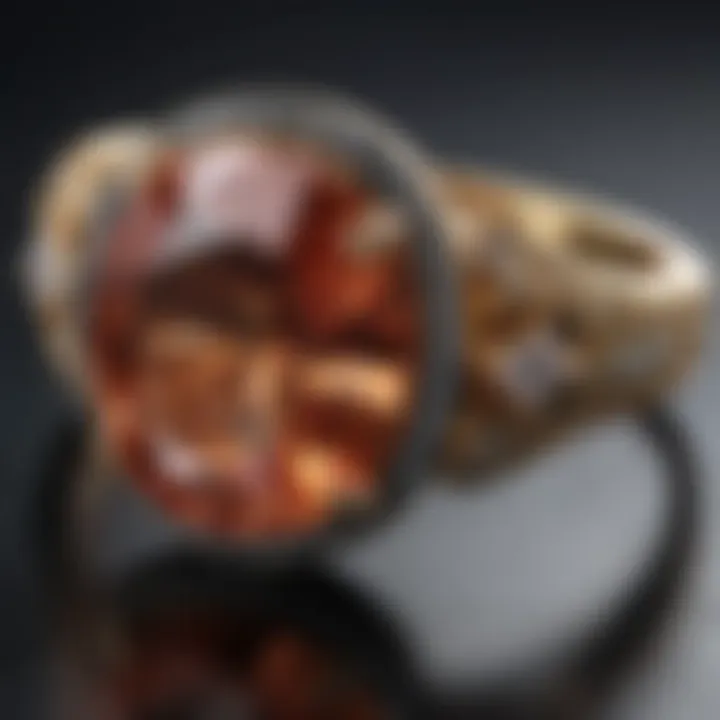
Furthermore, the quality of the cut plays a significant role in how each stone interacts with light. High-quality cuts ensure that even the smallest diamonds or colored gems retain their fire and scintillation. For those looking to invest in pieces that shimmer and shine, pave settings tick all the boxes. To put it simply: the stunning visual impact of pave jewelry is a direct result of how light dances across the array of gems.
Versatility in Design
One of the crown jewels of pave setting is its versatility. Jewelers are not limited to specific shapes or sizes, allowing them to employ various types of gemstones without losing design integrity. Whether it’s colored diamonds, emeralds, or even synthetic stones, the pave technique can beautifully incorporate a range of materials.
This tells the story of customization. A designer can easily cater to their client’s desires with different gems and styles while maintaining a cohesive look. Customers can opt for full pave settings, partial ones, or even mix different types to create a unique piece. Additionally, pave settings can be used in various jewelry categories—from rings and earrings to bracelets and necklaces—making them highly desirable for collectors and enthusiasts alike.
"Pave settings not only turn heads but also reflect the individuality and taste of the wearer, providing endless options for customization."
In summary, pave settings hold a treasure trove of benefits that enhance the artistry and appeal of jewelry. Their ability to dazzle, promote brilliance, and allow for creative freedom makes them a favorite for both designers and buyers. Engaging with pave jewelry is akin to stepping into a world of finely crafted luminosity—a testament to the skill of artisans and a source of joy for those who wear them.
Challenges and Disadvantages
When diving into the world of pave techniques, it’s crucial to understand that while they create stunning pieces, they also come with challenges that can’t be overlooked. This section shines a light on various factors that can impact both the longevity and the care required for pave-set jewelry. By grasping the challenges, jewelry enthusiasts, collectors, and designers can make informed decisions and better appreciate the intricacies involved in navigating these beautiful creations.
Durability Issues
Pave settings, despite their alluring appearance, face a significant hurdle in terms of durability. The small stones used in a pave technique are affixed to the metal base, often relying on tiny prongs or beads to hold them in place. This reliance can make them vulnerable to wear and tear. For instance, if you wear a pave ring daily, the stones might chip or loosen over time due to everyday activities like typing or even simple household chores. This tendency to lose stones is one of the prominent durability issues associated with pave settings. It's important to consider the lifestyle of the wearer when selecting pave jewelry, as frequent exposure to impact may necessitate extra caution.
Maintenance Needs
Regular maintenance is a must for preserving the beauty and structural integrity of pave-set jewelry. Unlike a simpler design, which may require little more than occasional cleaning, pave pieces need more attention. It’s advisable to clean these intricate pieces on a regular basis to prevent dirt buildup that can obscure the stones’ brilliance.
A common recommendation is to use a soft brush along with a mild soap solution. Avoiding abrasive cleaners is crucial, as they can cause more harm than good. Furthermore, professional inspection and cleaning every couple of years can help in spotting any loose stones or other potential issues early on. Such steps may seem like a hassle, but they are indispensable for keeping the shine alive and the stones secure.
Skill Level Required
Crafting pave settings requires a high level of skill, which could be daunting for novice jewelry makers. It’s no secret that precision is key in this art form, and the tiniest error can debilitate the piece's aesthetic appeal and durability.
The craftsmanship involved means that not everyone can create or repair pave jewelry. Gemstone placement demands not just an eye for detail, but also an understanding of the right techniques to ensure that each stone is securely fastened. This can include techniques such as bead setting and micro pave, each requiring distinct skills. For those aspiring to delve into making such pieces, a solid foundation in jewelry-making techniques is essential before attempting these intricate settings.
"A beautifully paved piece is not just an accessory but a testimony of skill and dedication in craftsmanship."
By understanding these challenges, one can appreciate the art that goes into pave setting jewelry while also equipping oneself with the knowledge needed for proper care and maintenance. Recognizing durability concerns, committing to regular upkeep, and acknowledging the skill involved are crucial in keeping pave jewelry not only beautiful but also lasting.
Caring for Pave Jewelry
Taking care of pave jewelry is not just a minor task; it’s rather essential to ensure that every small gemstone retains its shine and beauty. Pave settings can be quite intricate, with tiny stones being held in place by a web of metal. Proper care avoids potential damage and keeps your jewelry looking its best.
The importance of caring for pave jewelry stretches beyond mere aesthetics. For one, regular maintenance can prevent the stones from loosening or falling out. Additionally, because pave settings often involve multiple small gemstones, regular cleaning can help remove dirt and grime that tends to settle in between them, showcasing the true brilliance of each stone. You’re not just preserving a piece of jewelry; you’re also upholding the craftsmanship that went into making it.
Regular Cleaning Methods
Gunk can build up on pave jewelry quicker than a cat can chase a mouse. Fortunately, there are some straightforward methods to keep it clean.
- Soft Brush and Mild Soap
Use a soft-bristled toothbrush or a clean makeup brush with some warm, soapy water. It’s like giving your jewelry a gentle spa day. Simply dip the brush into the suds, giving the jewelry a soft scrub, especially in the crevices. - Ultrasonic Cleaners
For those who are more serious about cleanliness, an ultrasonic cleaner can work wonders. Just make sure you're not using it on very delicate pieces, as some stones may not hold up well. - Steaming
A steam cleaner can also be effective. Position the jewelry in the steam flow but avoid direct contact to prevent heat damage. Just imagine that vapor working its magic as it loosens the debris. - Avoid Harsh Chemicals
Stay clear of bleach or other harsh cleaners. They can damage both the stones and metals. Think of it as taking care of your favorite plant; feed it well, but don’t go overboard with fertilizers!
Professional Maintenance Tips
For those times when your jewelry needs a little more TLC, enlisting a professional can make a world of difference. Here are some pointers on when and how to seek professional help:
- Regular Inspections
Take your jewelry to a jeweler every six to twelve months. Their trained eye can spot problems like loose stones or worn prongs before they escalate. - Reapplying Secure Settings
If the pave is starting to look a little tired or worn, a professional can reapply secure settings without compromising the look. It’s like getting a fresh coat of paint on your house—it just revitalizes everything! - Insurance Considerations
Make sure to have your jewelry appraised regularly, especially if it's an item of significant value. Keeping it insured is crucial. In case anything happens, you won't be left in the lurch.
In the end, caring for pave jewelry is about balance. You want to keep it sparking and secure, allowing both the artistry and the beauty to shine brightly. As always, prevention is much easier than fixing a problem once it occurs.
Ending
In the realm of jewelry design, pave techniques emerge as a significant player, merging artistry with precision. This article has aimed to inspire an appreciation for the intricate world of pave settings while emphasizing their pivotal role in adding depth and sparkle to designs.
When it comes to summary of key points, several elements stand prominent:
- Types of Pave Setting: From classic to micro pave, each method brings its own unique flair, showcasing the versatility available for artisans.
- Materials: The choice of gemstones and metals influences not only the aesthetics but also the durability and care required for each piece.
- Challenges: Understanding longevity, maintenance, and required skill levels helps collectors and designers make informed decisions about their jewelry.
- Caring for Pave Jewelry: Knowledge of cleaning and professional upkeep can protect investments and enhance the lifespan of intricate pieces.
Quote: "The beauty of pave jewelry lies not just in the gemstones, but in the meticulous craft behind their arrangement."
Next, the future trends in pave setting hint at exciting directions in jewelry design. As technology advances, the techniques evolve too. Expect to see gems set in more innovative formations often made possible by enhanced laser technology and CAD (computer-aided design). Furthermore, sustainable practices in sourcing materials are becoming increasingly relevant. A tilt towards ethically sourced gemstones means that future pave pieces can shine brighter not just visually but morally as well.
In closing, pave settings are more than just a decorative choice. They represent a thoughtful interplay between tradition and modernity, encouraging ongoing dialogue among collectors, designers, and enthusiasts alike. As trends shift and innovations flourish, pave techniques will undoubtedly remain a cornerstone in the mosaic of jewelry design.



